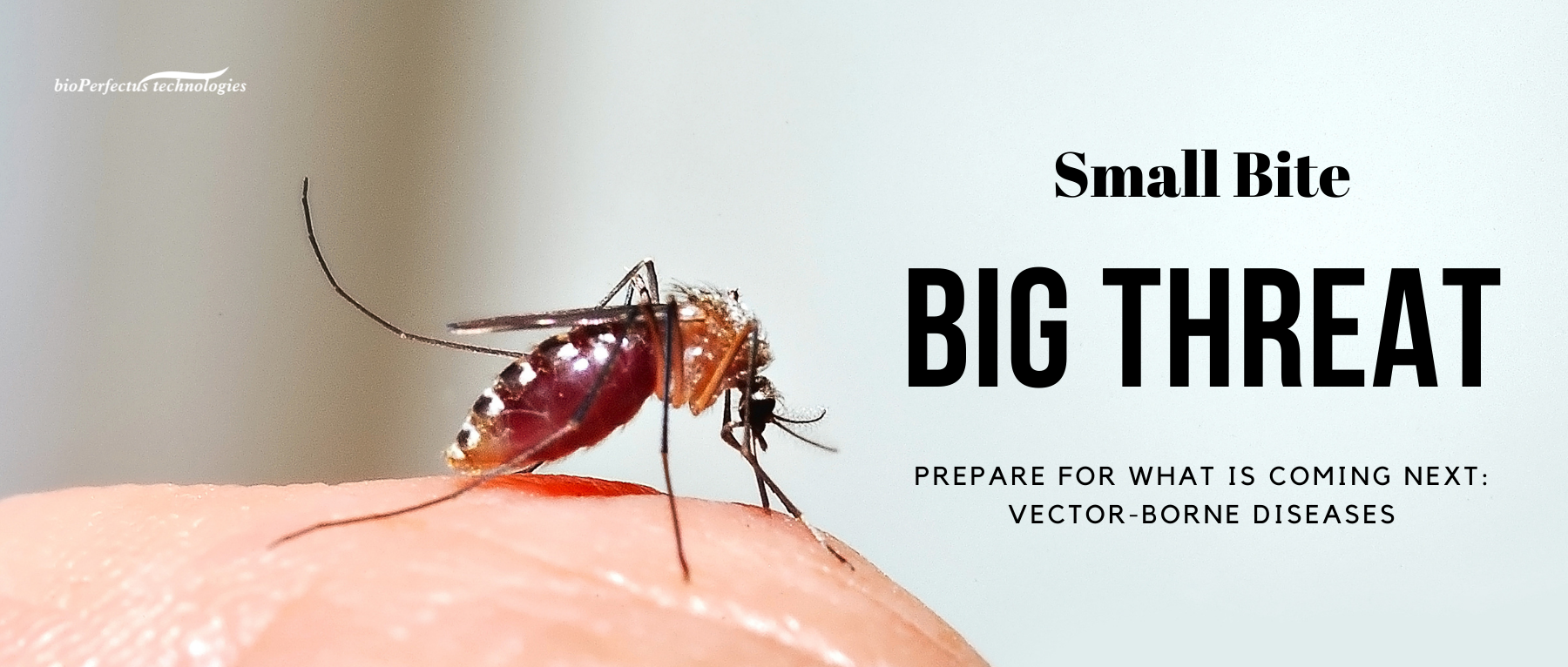
What is vector-borne disease?
Vector-borne disease is defined as a kind of infectious disease caused by either parasites, bacteria or viruses, and transmitted by vectors, which are living organisms that can transmit infectious pathogens between humans, or from animals to humans(table 1). Many of these vectors are bloodsucking insects, which ingest
disease-producing microorganisms during a blood meal from an infected host (human or animal) and later transmit it into a new host, after the pathogen has replicated. Often, once a vector becomes infectious, they are capable of transmitting the pathogen for the rest of their life during each subsequent bite/blood meal.
These kinds of diseases caused by arbovirus belong to zoonotic infectious diseases. That’s also the reason why it is sub-cataloged under zoonotic disease in some researches. And USA CDC categorized the Division of
Vector-Borne Diseases (DVDB) as a part of CDC’s National Center for Emerging and Zoonotic Infectious Diseases (NCEZID).
Table 1. non-exhaustive list of vector-borne diseases ordered by vectors’ transmission method by WHO
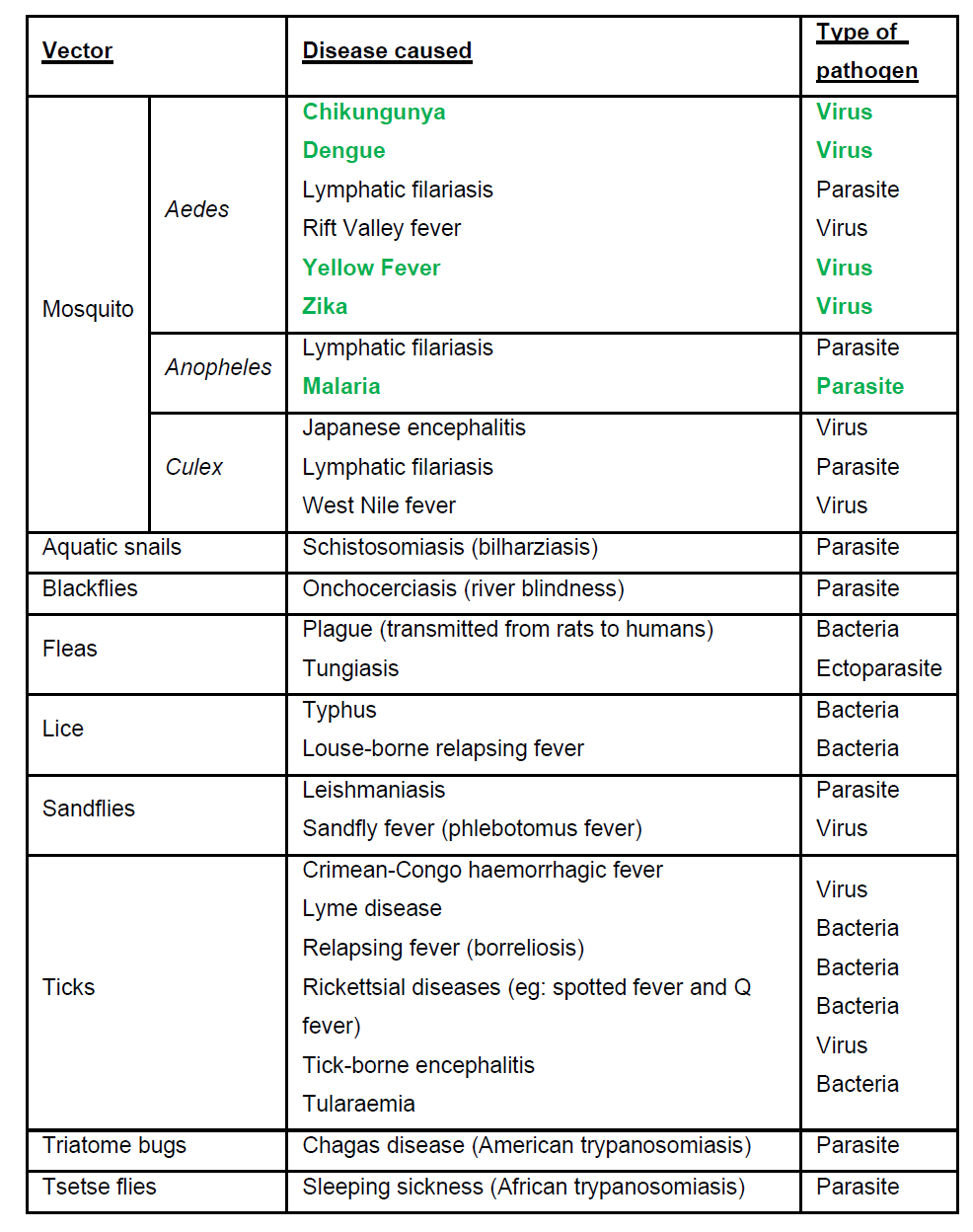
Why vector-borne diseases matter?
Generally speaking, the transmission of vector-borne diseases is related to population growth, urbanization, globalization and lack of public health infrastructure. Vector-borne diseases have no boundary, It means that all people will be infected if the spread is not well controlled.
According to WHO data, Vector-borne diseases account for more than 17% of all infectious diseases, causing more than 700,000 deaths annually. The burden of these diseases is highest in tropical and subtropical areas, and they disproportionately affect the poorest populations. Since 2014, major outbreaks of dengue, malaria, chikungunya, yellow fever and Zika have afflicted populations, claimed lives, and overwhelmed health systems in many countries. Other diseases such as Chikungunya, leishmaniasis and lymphatic filariasis cause chronic suffering, life-long morbidity, disability and occasional stigmatization.
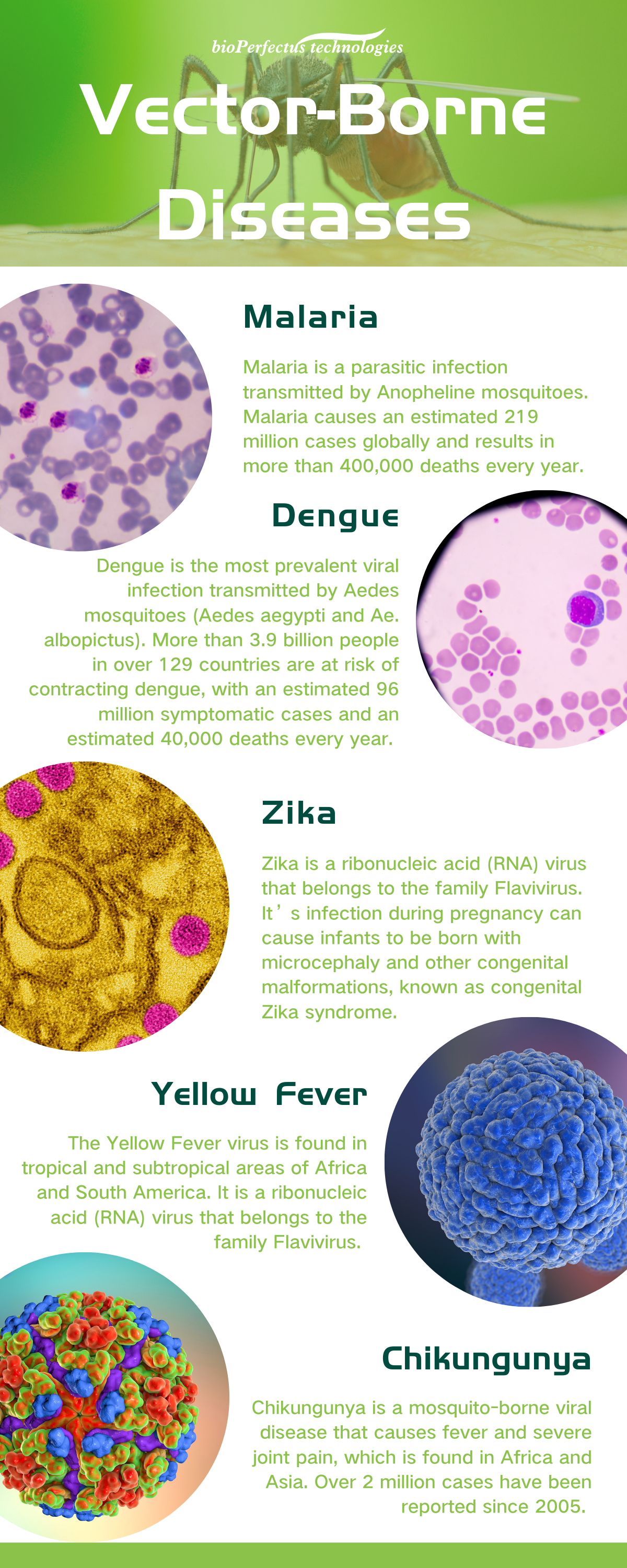
Malaria
Malaria is a parasitic infection transmitted by Anopheline mosquitoes. 5 major parasite species cause malaria in humans, Pf (Plasmodium falciparum), Pv (Plasmodium vivax), Po (Plasmodium ovale), Pm (Plasmodium malariae), Pk (Plasmodium Knowlesi). Among them, Plasmodium falciparum and Plasmodium vivax pose the greatest threat.
Malaria causes an estimated 219 million cases globally and results in more than 400,000 deaths every year.
Estimated data of Malaria data in 2019 showed that, Malaria dead cases happened in Nigeria (23%), Democratic Republic of the Congo (11%), United Republic of Tanzania (5%), Niger (4%), Mozambique (4%) and Burkina Faso (4%). Most of the deaths (about 67%) occur in children under the age of 5 years.
Vaccine is available for Malaria. In Ghana, Kenya and Malawi, vaccine has reached more than 800 000 children since 2019.
Infants, children under 5 years of age, pregnant women and patients with HIV/AIDS, as well as people with low immunity moving to areas with intense malaria transmission such as migrant workers, mobile populations and travellers are population at Malaria risk.
However, medications & treatment will depend on some information such as the clinical status of the patient, the species of the infecting parasite, and so on. The Global technical strategy for malaria 2016–2030 sets the target of reducing global malaria incidence and mortality rates by at least 90% by 2030.
Dengue
Dengue is the most prevalent viral infection transmitted by Aedes mosquitoes (Aedes aegypti and Ae. albopictus). More than 3.9 billion people in over 129 countries are at risk of contracting dengue, with an estimated 96 million symptomatic cases and an estimated 40,000 deaths every year. No specific antiviral agents exist for dengue.
Dengue is caused by a virus of the Flaviviridae family and there are four distinct, but closely related, serotypes of the virus that cause dengue (DENV-1, DENV-2, DENV-3 and DENV-4). Recovery from infection is believed to provide lifelong immunity against that serotype. However, cross-immunity to the other serotypes after recovery is only partial, and temporary. Subsequent infections (secondary infection) by other serotypes increase the risk of developing severe dengue.
In 2020, dengue affected several countries, with increased number of cases in Bangladesh, Brazil, Cook Islands, Ecuador, India, Indonesia, Maldives, Mauritania, Mayotte (Fr), Nepal, Singapore, Sri Lanka, Sudan, Thailand,
Timor-Leste and Yemen. In 2021, dengue continues to affect Brazil, Cook Islands, Colombia, Fiji, Kenya, Paraguay, Peru and Reunion island.
According to research results, the combined impact of COVID-19 and dengue epidemics can potentially result in devastating consequences for the populations at risk.
Zika
Zika is spread mostly by the bite of an infected Aedes species mosquito (Ae. aegypti and Ae. albopictus). These mosquitoes bite during the day and night.
Zika is a ribonucleic acid (RNA) virus that belongs to the family Flavivirus. It’s infection during pregnancy can cause infants to be born with microcephaly and other congenital malformations, known as congenital Zika syndrome. Infection with Zika virus is also associated with other complications of pregnancy including preterm birth and miscarriage.
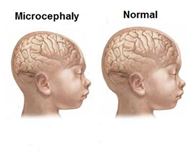
Yellow Fever
The Yellow Fever virus is found in tropical and subtropical areas of Africa and South America. It is a ribonucleic acid (RNA) virus that belongs to the family Flavivirus. The virus is spread to people by the bite of an infected mosquito. Yellow fever is a very rare cause of illness in U.S. travelers. Illness ranges from a fever with aches and pains to severe liver disease with bleeding and yellowing skin (jaundice). Yellow fever infection is diagnosed based on laboratory testing, a person’s symptoms, and travel history. There is no medicine to treat or cure the infection.
Chikungunya
Chikungunya is a mosquito-borne viral disease that causes fever and severe joint pain, which is found in Africa and Asia. Over 2 million cases have been reported since 2005. Most commonly, the mosquitoes involved are Aedes aegypti and Aedes albopictus. It is a ribonucleic acid (RNA) virus that belongs to the alphavirus genus of the family Togaviridae. There is no specific antiviral drug treatment for chikungunya and there is no commercial chikungunya vaccine. There is no cure, and treatment is focused on relieving the symptoms.
Plenty of vector-borne diseases are transmitted by mosquitoes, such as dengue, malaria, chikungunya, yellow fever and Zika and so on. Mosquito-borne diseases raise much attention, and World Mosquito Day on 20th August annually was firstly established to mark the anniversary of the discovery that mosquitoes transmit the parasite that causes malaria.
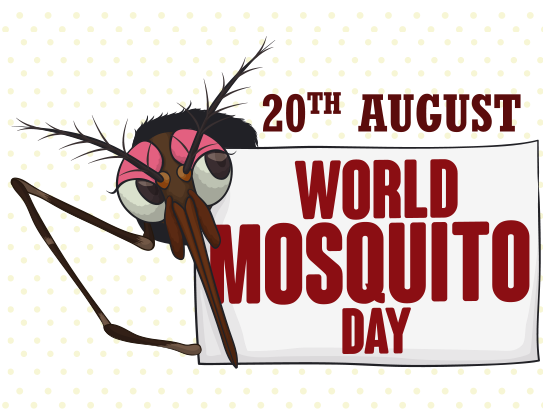
After knowing the epidemiological information of several main vector-borne diseases, it is obvious that early diagnosis and monitor are important to make these infectious diseases under control and contribute to medication.
Therefore, strengthening the detection and monitoring of vector-borne diseases is not only a task in poor tropical areas but also a topic of concern to virologists and public health experts all over the world.
Reference
- Vector-borne diseases, WHO website
- Vector-borne diseases, CDC website

